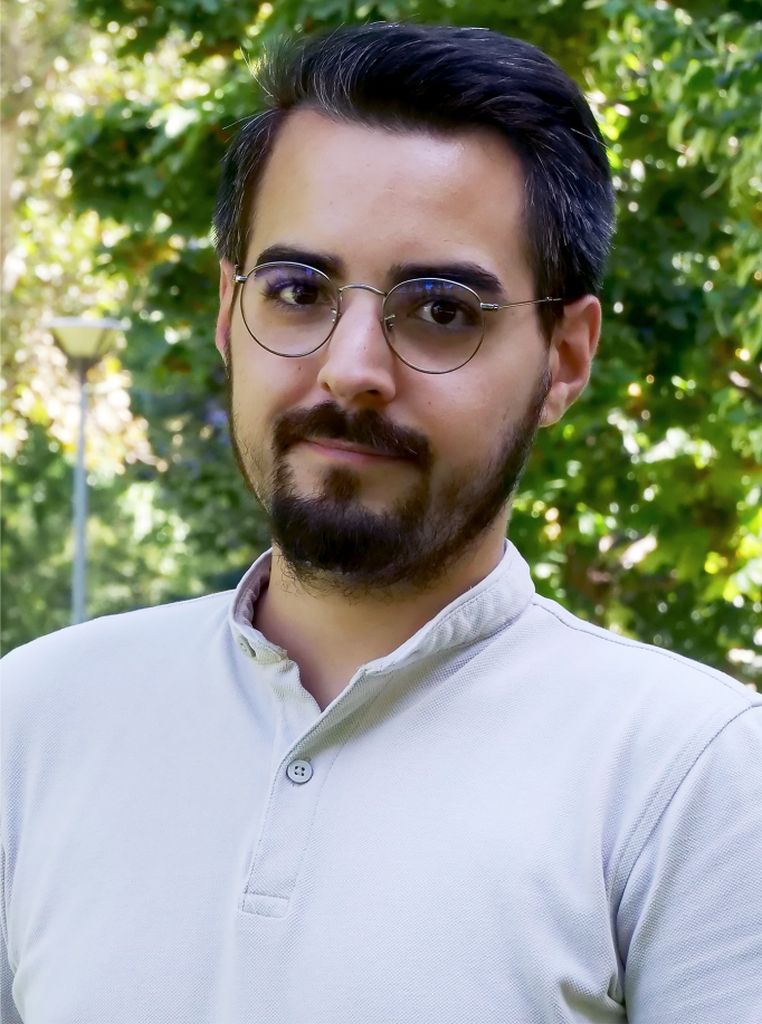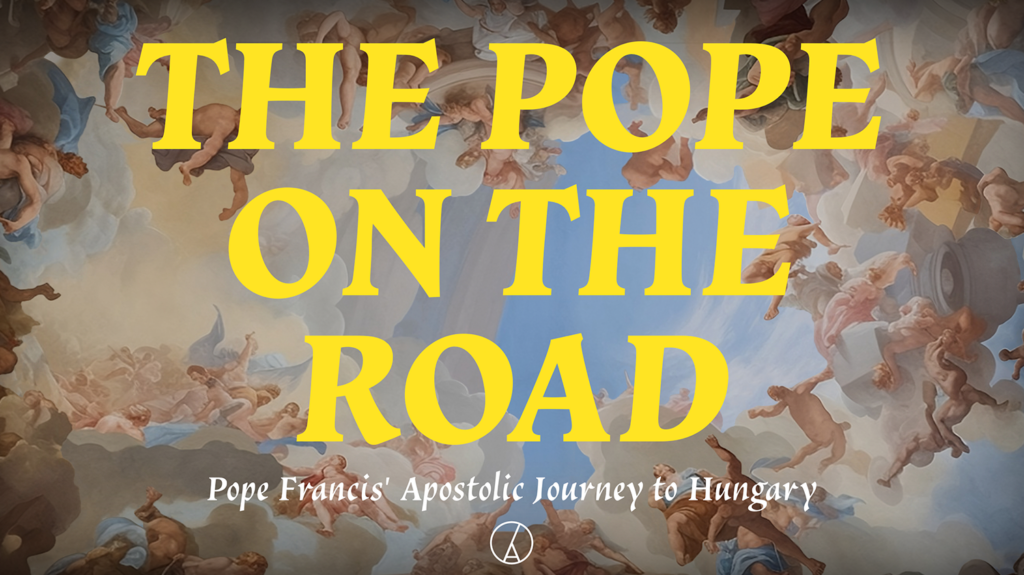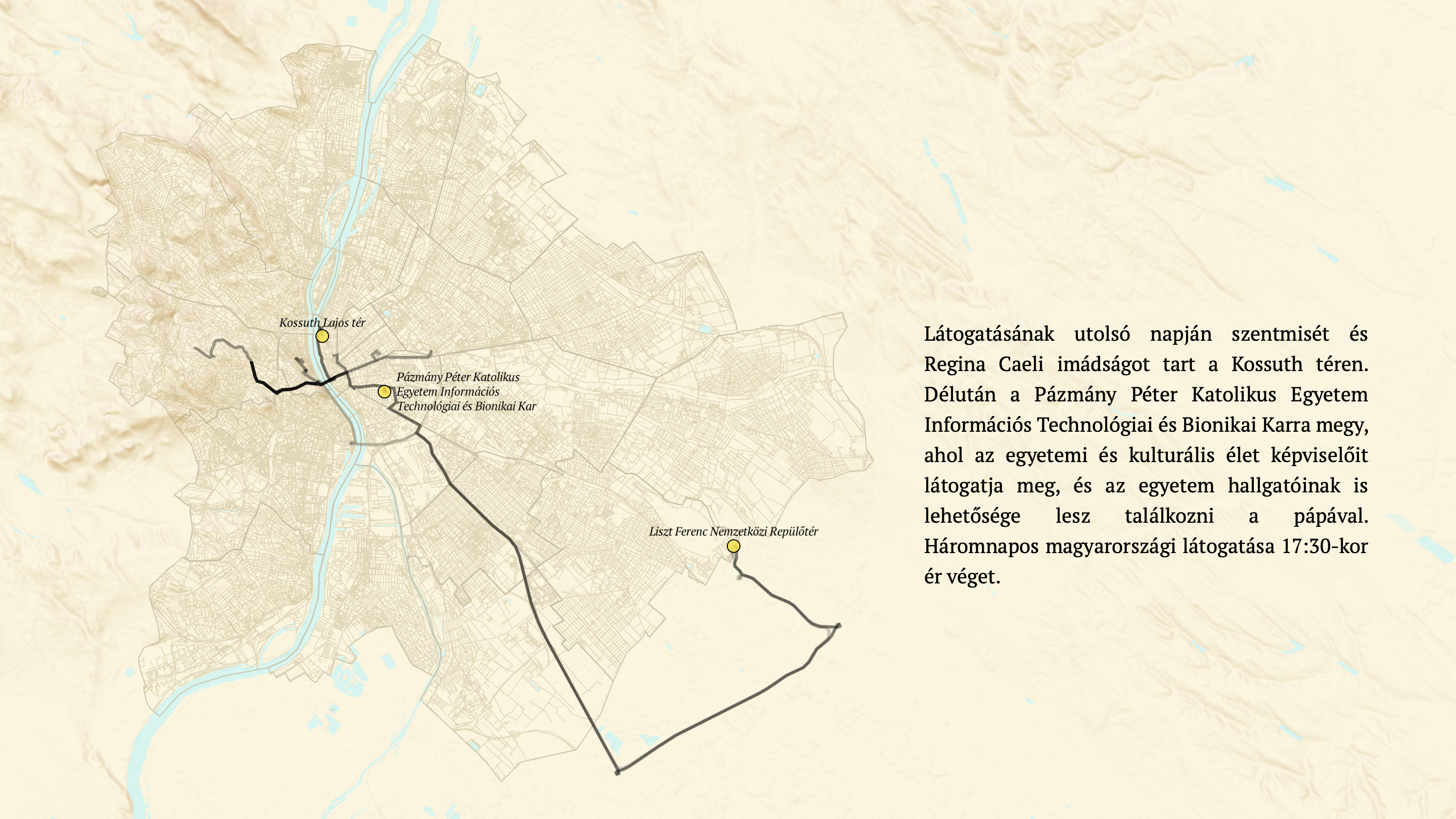The https://english.atlatszo.hu use cookies to track and profile customers such as action tags and pixel tracking on our website to assist our marketing. On our website we use technical, analytical, marketing and preference cookies. These are necessary for our site to work properly and to give us inforamation about how our site is used. See Cookies Policy
Interactive map showing Pope Francis’ visit to Hungary and the tradition of papal visits
As Pope Francis arrives in Hungary for a three-day visit, it’s worth taking a closer look at his global travels. The Pope’s journey around the world has been nothing short of extraordinary, marked by memorable moments that have captured the attention of the world. From addressing climate change in the United States Congress to visiting refugees on the Greek island of Lesbos, the Pope’s global influence has been used to tackle some of the world’s most pressing issues. In the latest data-driven exploration of the Atlo team, we looked at the Pope’s travels, examining the data behind his worldwide pilgrimages and uncovering insights into the impact of his global outreach.
On 28 April 2023, Pope Francis arrives to Budapest, the capital of Hungary, for a three-day visit. It is rare for Pope Francis to return to a country for the second time in such a short time. He has already returned to Greece and Cuba for a second visit. His first visit to our country was for an international Catholic event, the International Eucharistic Congress, and this time for the country itself, though the reason for his return is not clear.

Our conversation with Vatican expert Aurel Márk Érszegi reveals that the Pope said of the reason for his return to Hungary – already at the end of his 2021 trip – that “there is much of value in Hungarians”. Later, he also said that he would like to visit smaller, lesser-known countries in Europe, as they also have a significant culture. In other words, he himself intends to use his visit as a way of raising awareness:
“the world should pay attention to Hungary, its spiritual, intellectual, cultural and human values”
The Pope on the Road
As Pope Francis arrives in Hungary for a three-day visit, it’s worth taking a closer look at his global travels. The Pope’s journey around the world has been nothing short of extraordinary, marked by memorable moments that have captured the attention of the world.
The Pope’s carefully planned three-day programme has great symbolic significance. The visit has a promotional value, as it will rise the interest of many to see what it is that will prompt him to visit Hungary for a second time so soon. According to Érszegi, the individual elements of the programme help to answer this question. Partly by their beauty, such as the St Stephen’s Basilica, Buda Castle or Kossuth Square, and partly by the significance and message of the encounters there: the Church’s care of the people or the visitation of a catholic university.
Pope Francis will arrive at Budapest’s Liszt Ferenc International Airport on 28 April at 10am, from where he will go straight to the Sándor Palace. He will meet with President Katalin Novák and Prime Minister Viktor Orbán. He will then spend a few hours at the Holy See Embassy in Hungary, where he will stay during his stay in Budapest. He will have a suite in the building and will be protected by the Vatican Secret Service and the Swiss Guard. According to the Hungarian website dedicated to the Pope’s visit, he will end the day at St Stephen’s Basilica.
While the first day is about meetings with political and religious figures, all the stops on the second day will be about Hungarian people, young people and minority communities. From the Apostolic Nunciature, the first leg of his journey will take him to the Blessed Batthyány-Strattmann László Home, where he will meet children with special educational needs, and children with visual and mobility impairments. He will then go to Rózsák Square in the 7th district, where he will first meet with poor people and refugees at the Church of St Elisabeth of the House of Árpád, and then with the Greek Catholic community at the Church of the Assumption of the Mother of God. According to the 2011 census of the Central Statistical Office, there are only 180,000 Greek Catholics in Hungary, a small community compared to the 3.6 million Roman Catholics. In the afternoon, he will meet with some 15,000 young people at the Papp László Sports Arena, before returning to the Nunciature for a private meeting with members of the Society of Jesus.
On the last day of his visit, he will celebrate Mass and pray the Regina Caeli prayer at Kossuth Square. In the afternoon, he will visit the Faculty of Information Technology and Bionics of the Pázmány Péter Catholic University, where he will meet representatives of the academic and cultural life, and students of the university will have the opportunity to meet the Pope. His three-day visit to Hungary will end at 17:30.
In addition to this topical visit to Hungary, we also present the full story of the international travels of the popes, and the history of the popes over thousands of years.
Before Hungary, he had visited two countries twice: Cuba and Greece. He first visited Cuba on 19 September 2015 and spent two days there. He visited Cuba for the second time at the beginning of his 2016 trip to Mexico, where he met Patriarch Kirill of Moscow at Havana José Martí International Airport. The two religious leaders signed a thirty-point joint declaration addressing global issues.
On 16 April 2016, he visited the Greek island of Lesbos to support thousands of refugees seeking refuge there or passing through the island on their way to Europe and beyond. His second visit to the country was longer, including a visit to the capital Athens, but this time he also returned to the island of Lesvos to meet refugees.
Popes have visited many countries more than once. Poland tops the list, with eleven papal visits: John Paul II, of Polish origin, visited the country nine times, Benedict XVI and Francis once each. The United States of America follows with ten visits, with all four travelling popes.
Papacy is one of the longest-established institutions in the world and has played a prominent role in the history of Christianity and humanity as a whole. Up to the current Pope Francis, there have been 307 popes in power, but the legitimacy of many of them is questionable, either because they began their pontificate as antipopes or for other reasons. The Christian Church recognises 266 popes.
Of the popes whose place of birth is known, only four were not from Europe. Three popes – Victor I, Miltiades and Gelasius I – were of African descent, but their exact place of birth is not known. Francis is the first Pope to come from Argentina in South America.
Pope Francis (born Jorge Mario Bergoglio) is the first Pope to be a member of the Society of Jesus (Jesuits), the first from the Americas, the first from the southern hemisphere, and the first from outside Europe since Pope Gregory III of Syria in the 8th century. Born in Buenos Aires, Argentina, Bergoglio spent time as a bouncer and janitor as a young man, then studied chemistry and worked as a technician in a food science laboratory. After recovering from a serious bout of pneumonia, he was inspired to join the Jesuits in 1958. He was ordained a Catholic priest in 1969 and served as Jesuit Provincial Superior of Argentina from 1973 to 1979. In 1998 he became Archbishop of Buenos Aires and was appointed Cardinal by Pope John Paul II in 2001. He led the Argentine Church during the Argentine riots of December 2001. Néstor Kirchner and Cristina Fernández de Kirchner’s government considered him a political rival. Following Pope Benedict’s resignation on 28 February 2013, the papal conclave elected Bergoglio as his successor on 13 March. He chose the name Francis in honour of St Francis of Assisi as his papal name.
The full feature is available at the link below:
The Pope on the Road
As Pope Francis arrives in Hungary for a three-day visit, it’s worth taking a closer look at his global travels. The Pope’s journey around the world has been nothing short of extraordinary, marked by memorable moments that have captured the attention of the world.
Written by Krisztián Szabó Luca Pete and Attila Bátorfy. Translated by Krisztián Szabó. The original, Hungarian version of this story can be found here.


